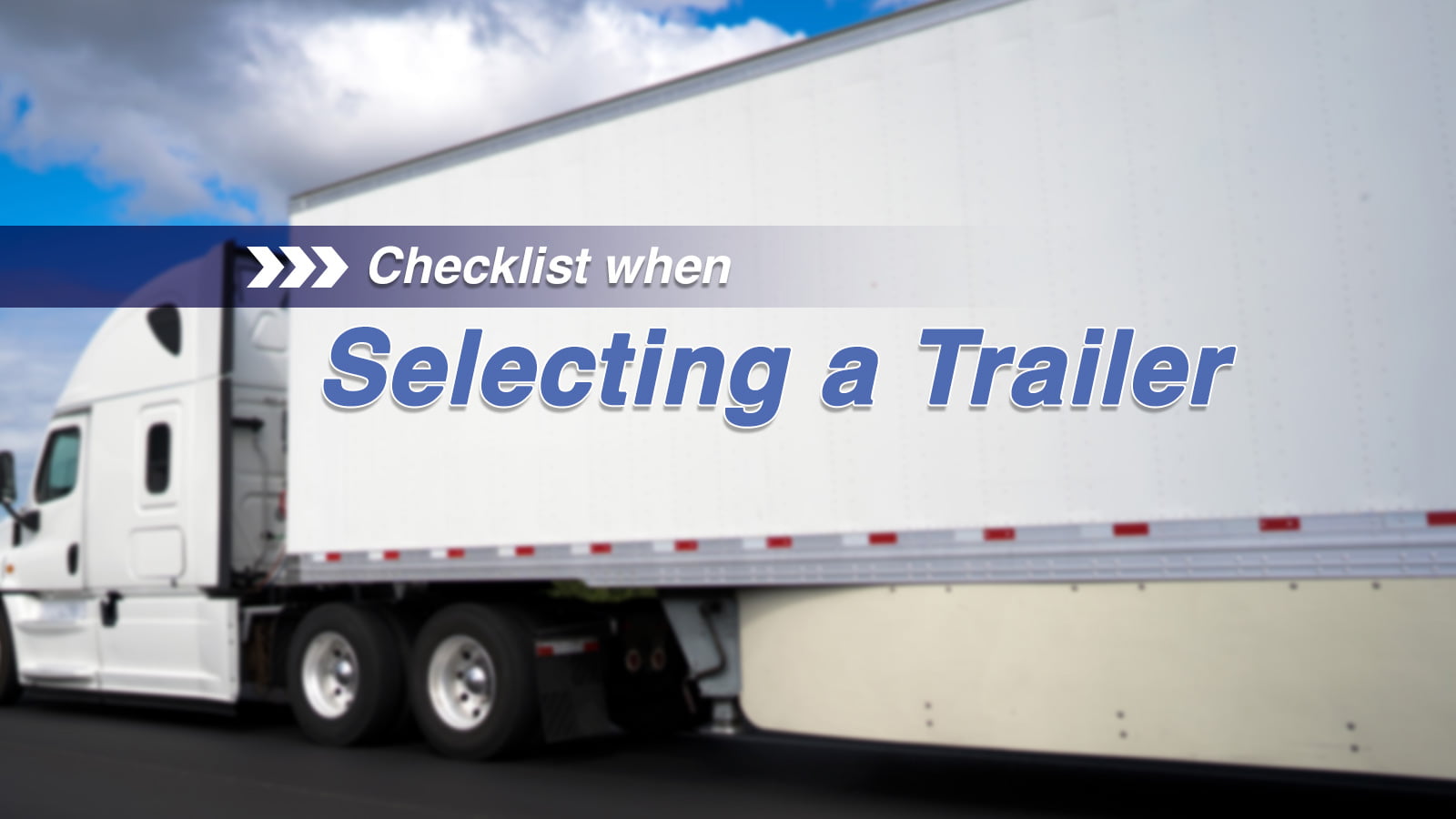You are now the lease owner of a semi-truck, which you selected using our tips, and need a trailer to transport freight. While on your way to Super Ego’s trailer yard, you realized you are not quite sure what to look for or how to select a trailer that will work for you. That’s where we’re stepping in – we’ll help by sharing a few tips that will assist you in making the right choice.
Here’s a list of all the things you should check:
- Possible exterior damage
- Kingpin
- Air leaks
- Brakes
- Lights and side markers
- Sliding tandems
- Tires and rims
- Brake pads
- Leaf springs and shocks
- Doors
- Floorboards
- Bottom rails or bump plates
Start by doing a walkaround on the trailer. Pay attention to the exterior of the trailer and make sure there aren’t any visible holes. Pay close attention to the rivets that secure the side panel to the bottom of the trailer. If any are missing, make sure that there aren’t any gaps because this means that water can get inside. But note that not all missing rivets mean there might be leaks.
After you have done your walk-around inspection, look under the trailer in the front and make sure that your kingpin is intact and in good condition; if it is, then it’s time to hook up to the trailer and inspect it.
Hook up to a trailer. Get out and make sure that there aren’t any excessive gaps between your trailer and the fifth wheel. Connect the service and emergency air lines, as well as your seven-way power source (your electrical line).
Now, get back into your truck and check your air pressure (a leak-down test) and a tug test to make sure the tractor and trailer hook properly, and that your trailer brakes are engaged.
Next, do a light test. Get out of your truck, and make sure ALL the lights and side markers are working correctly. While you are checking the lights, listen for air leaks as you walk around the trailer. Make sure that your trailer tandem axles are sliding properly, and that all pins are engaging and disengaging properly. If they are sticking out, apply a greasing agent to the sliding rail and locking pins.
Look at the undercarriage at the back of the trailer and make sure nothing is hanging out of the ordinary. Inspect all your trailer tires and look for uneven wear. This can indicate bad shocks or underinflation. You should also move the trailer about 1-2 feet forwards or backward to check for bald spots on the tires. All tires should have a tread depth of 2/32nd or more.
Make sure your brakes are within DOT standards and above the brake pad wear line.
Also, check if your leaf springs and shocks are in order, leaking is a sign of the shocks going bad.
Now, go to the back of the trailer and open your trailer doors. Make sure both doors can open, close, and latch properly. Get inside the trailer and do a walk around it – it’s recommended that you close both doors so you can do a visual light test from the inside, and make sure there aren’t any holes that you can see the light from.
Open the doors, and look at the floorboards for any missing or damaged boards. Pay attention to the bottom rails as well.
We hope all these will help you to find the trailer that fits your needs. We value your business and look forward to having a productive and profitable business relationship. For more information, check our trailer program.


Leave A Comment